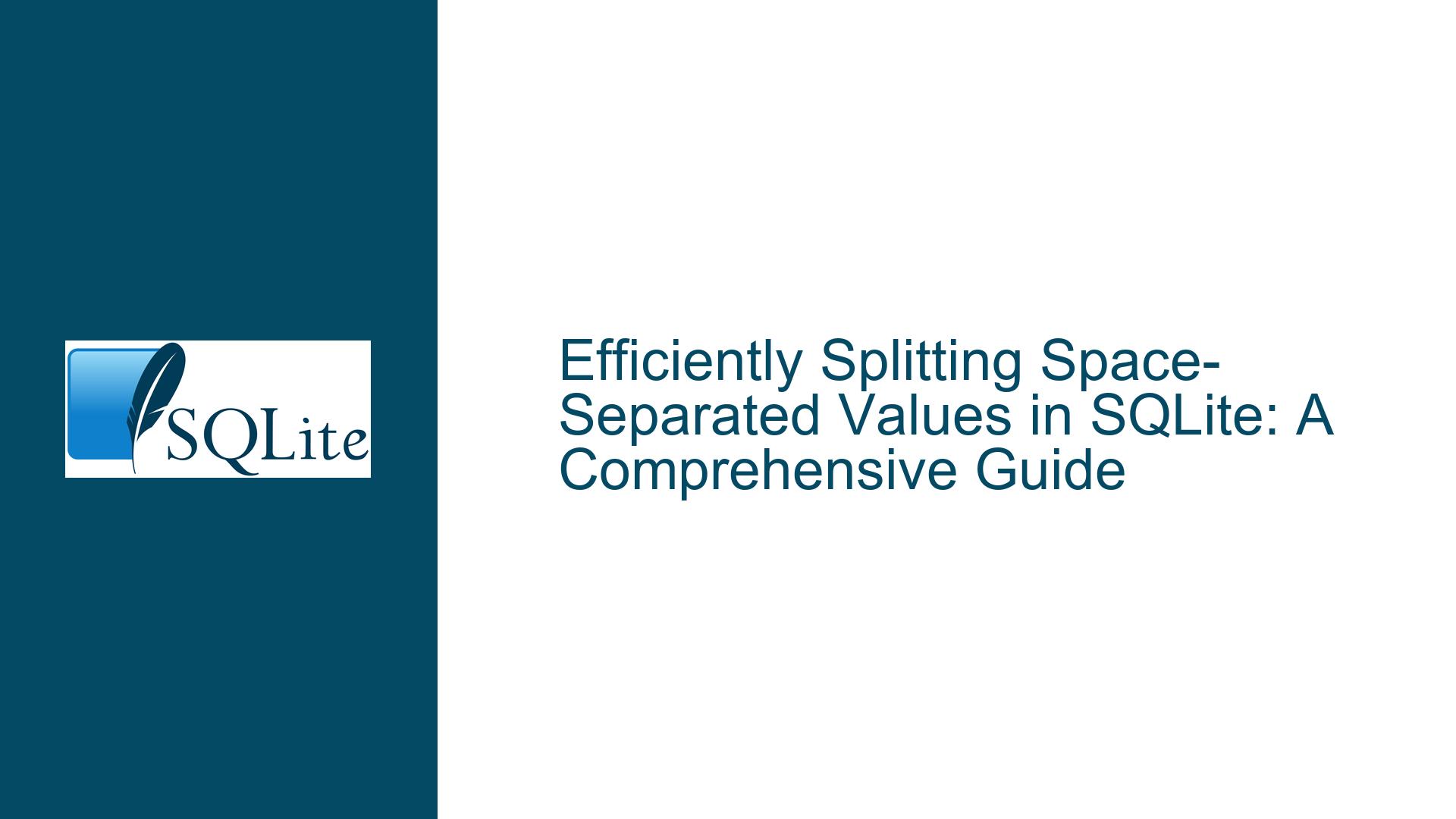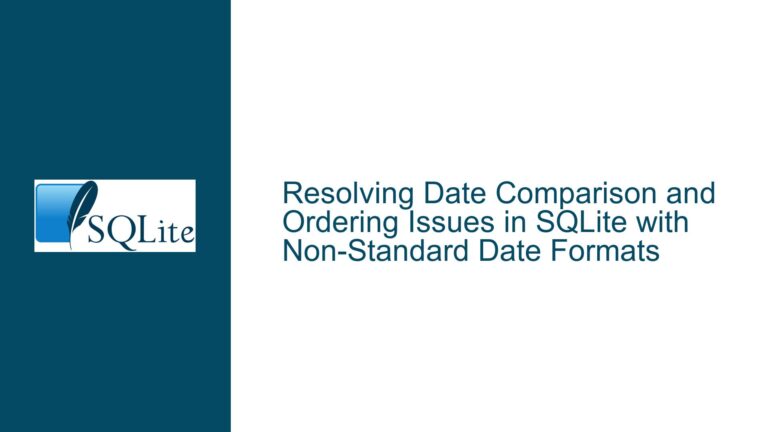Efficiently Splitting Space-Separated Values in SQLite: A Comprehensive Guide
Understanding the Need for Splitting Space-Separated Values in SQLite
In many database applications, it is common to encounter scenarios where data is stored in a denormalized form, such as space-separated values within a single column. This approach, while sometimes convenient for storage, can complicate data retrieval and manipulation, especially when the goal is to perform operations that require each value to be in its own row. For instance, joining tables based on individual values within a space-separated string becomes cumbersome without first splitting the string into its constituent parts.
The core issue here revolves around the absence of a built-in split function in SQLite that can directly transform a space-separated string into multiple rows. While SQLite does offer a rich set of string manipulation functions, such as substr, instr, and trim, these functions alone are not sufficient to achieve the desired transformation efficiently. The lack of a native split function necessitates the use of more complex SQL constructs, such as Common Table Expressions (CTEs), to emulate the splitting process.
Challenges and Limitations of Emulating split with CTEs
Emulating a split function using CTEs in SQLite involves a recursive approach where the string is iteratively split at each space character. This method, while functional, introduces several challenges and limitations. First, the recursive nature of the CTE can lead to performance issues, especially when dealing with large datasets or long strings. Each recursive step involves additional computational overhead, which can quickly accumulate and degrade query performance.
Second, the CTE-based approach requires careful handling of edge cases, such as strings with leading or trailing spaces, multiple consecutive spaces, or empty strings. These edge cases can complicate the logic and increase the risk of errors. Additionally, the CTE must be designed to handle the specific structure of the input data, which may vary between different use cases. This lack of generality makes the CTE-based solution less flexible and harder to maintain.
Finally, the CTE-based approach can be verbose and difficult to understand, especially for users who are not familiar with recursive SQL constructs. The complexity of the query can obscure its intent, making it harder to debug and modify. This is particularly problematic in collaborative environments where multiple developers may need to work with the same codebase.
Optimizing String Splitting in SQLite: Best Practices and Alternative Approaches
Given the challenges associated with emulating a split function using CTEs, it is worth exploring alternative approaches that can achieve the same result more efficiently. One such approach involves leveraging SQLite’s JSON1 extension, which provides functions for working with JSON data. By converting the space-separated string into a JSON array, it becomes possible to use the json_each function to extract individual values as rows.
The JSON-based approach offers several advantages over the CTE-based method. First, it is generally more performant, as the JSON functions are optimized for handling structured data. Second, it is more concise and easier to understand, as the logic for splitting the string is encapsulated within the JSON functions. This reduces the complexity of the query and makes it more maintainable.
Another alternative is to preprocess the data before inserting it into the database. If the space-separated values are generated by an external application, it may be possible to modify the application to store the data in a normalized form, such as a JSON array or a separate table. This approach eliminates the need for splitting the string at query time and can significantly improve query performance.
In cases where preprocessing is not feasible, it may be worth considering the use of a user-defined function (UDF) to implement the split functionality. While SQLite does not natively support UDFs, they can be added using extensions or by embedding SQLite within a host language that supports UDFs. A UDF-based split function would provide the same convenience as a built-in function, with the added benefit of being customizable to specific use cases.
Conclusion
Splitting space-separated values in SQLite is a common but challenging task that requires careful consideration of performance, maintainability, and flexibility. While CTEs offer a viable solution, they come with significant limitations that can impact query performance and code readability. Alternative approaches, such as leveraging the JSON1 extension or preprocessing the data, can provide more efficient and maintainable solutions. Ultimately, the choice of method will depend on the specific requirements of the application and the constraints of the environment in which SQLite is being used. By understanding the trade-offs associated with each approach, developers can make informed decisions that optimize both the performance and maintainability of their SQLite queries.






